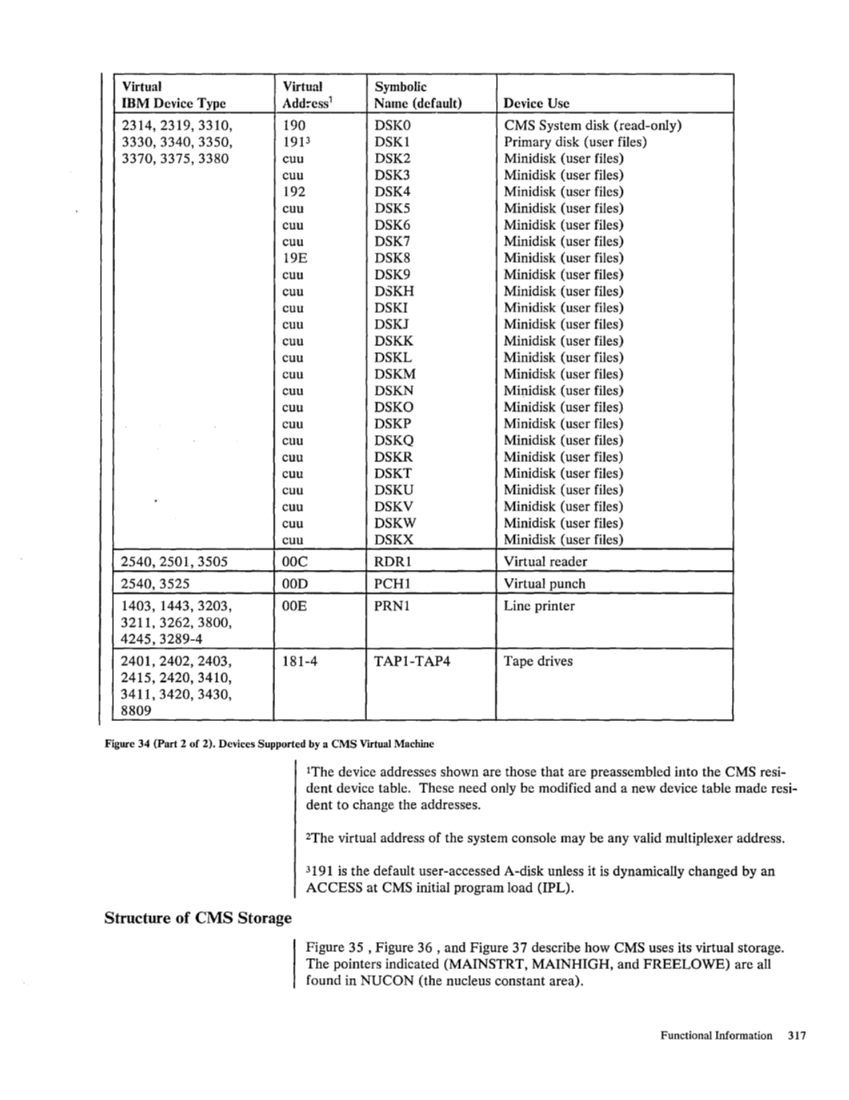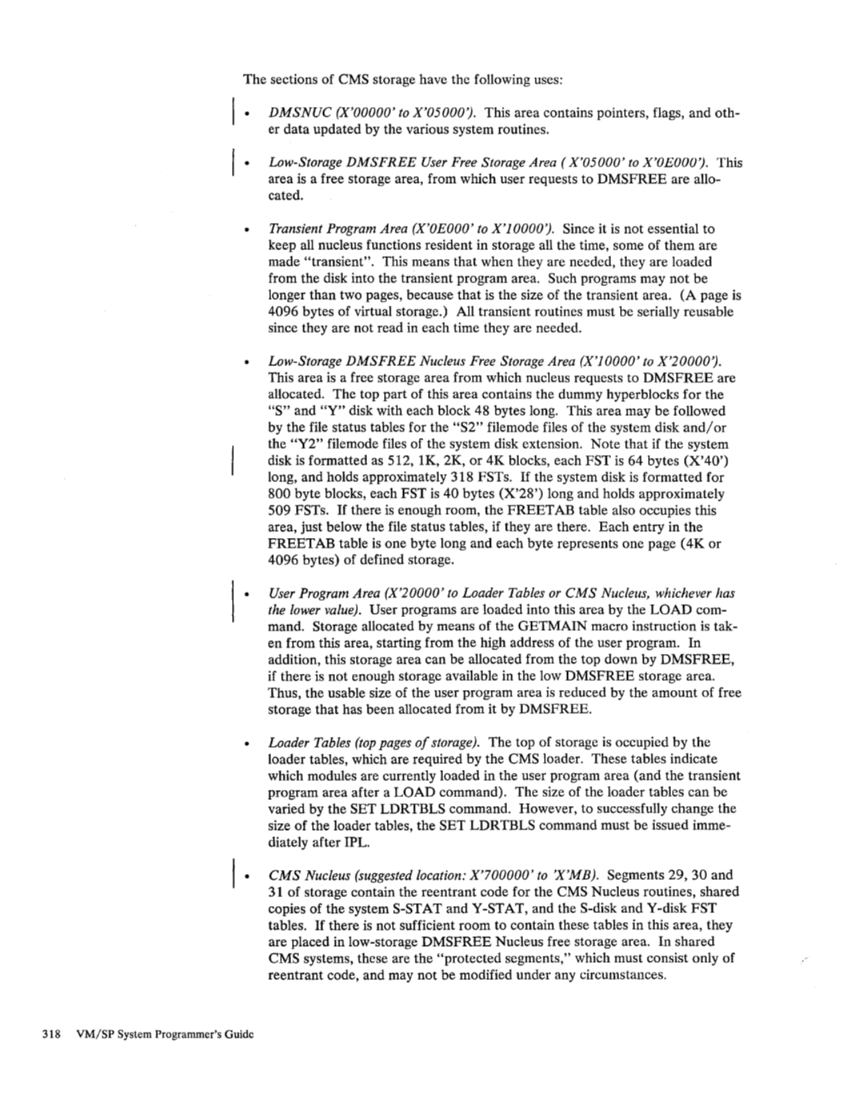Virtual Virtual Symbolic
IBM Device Type Add:ess
1
Name (default) Device Use
2314,2319,3310,190 DSKO CMS System disk (read-only) 3330, 3340, 3350, 19J3 DSKI Primary disk (user files)
3370,3375,3380 cuu DSK2 Minidisk (user files)
cuu DSK3 Minidisk (user files)
192 DSK4 Minidisk (user files)
cuu DSK5 Minidisk (user files)
cuu DSK6 Minidisk (user files)
cuu DSK7 Minidisk (user files)
19E DSK8 Minidisk (user files)
cuu DSK9 Minidisk (user files)
cuuDSKH Minidisk (user files)
cuu DSKI Minidisk (user files)
cuu DSKJ Minidisk (user files)
cuu DSKK Minidisk (user files)
cuu DSKL Minidisk (user files)
cuu DSKM Minidisk (user files)
cuu DSKN Ivlinidisk (user files)
cuuDSKO Minidisk (user files)
cuu DSKP Minidisk (user files)
cuu DSKQ Minidisk (user files)
cuu DSKR Minidisk (user files)
cuu DSKT Minidisk (user files)
cuu DSKU Minidisk (user files)
cuu DSKV Minidisk (user files)
cuu DSKW Minidisk (user files)
cuu DSKX Minidisk (user files)2540,2501,3505 OOC RDRI Virtual reader
2540,3525OOD PCHI Virtual punch 1403, 1443, 3203, OOE PRNI Line printer
3211, 3262,3800, 4245, 3289-4 2401, 2402, 2403, 181-4 TAPI-TAP4 Tape drives
2415,2420, 3410, 3411, 3420, 3430, 8809 Figure 34 (Part 2 of 2). Devices Supported by a eMS Virtual Machine
Structure of eMS StorageIThe device addresses shown are those that are preassembled into the CMS resi
dent device table. These need only be modified and a new device table made resi
dent to change the addresses.
2The virtual address of the system console may be any valid multiplexer address.
3191 is the def aul t user-accessed A-disk unless it is dynamically changed by an
ACCESS at CMS initial program load (IPL).
Figure 35 , Figure 36 , and Figure 37 describe how CMS uses its virtual storage.
The pointers indicated (MAINSTRT, MAINHIGH, and FREELOWE) are all
found inNUCON (the nucleus constant area).
Functional Information 317
IBM Device Type Add:ess
1
Name (default) Device Use
2314,2319,3310,
3370,3375,3380 cuu DSK2 Minidisk (user files)
cuu DSK3 Minidisk (user files)
192 DSK4 Minidisk (user files)
cuu DSK5 Minidisk (user files)
cuu DSK6 Minidisk (user files)
cuu DSK7 Minidisk (user files)
19E DSK8 Minidisk (user files)
cuu DSK9 Minidisk (user files)
cuu
cuu DSKI Minidisk (user files)
cuu DSKJ Minidisk (user files)
cuu DSKK Minidisk (user files)
cuu DSKL Minidisk (user files)
cuu DSKM Minidisk (user files)
cuu DSKN Ivlinidisk (user files)
cuu
cuu DSKP Minidisk (user files)
cuu DSKQ Minidisk (user files)
cuu DSKR Minidisk (user files)
cuu DSKT Minidisk (user files)
cuu DSKU Minidisk (user files)
cuu DSKV Minidisk (user files)
cuu DSKW Minidisk (user files)
cuu DSKX Minidisk (user files)
2540,3525
3211, 3262,
2415,
Structure of eMS Storage
dent device table. These need only be modified and a new device table made resi
dent to change the addresses.
2The virtual address of the system console may be any valid multiplexer address.
3191 is the def aul t user-accessed A-disk unless it is dynamically changed by an
ACCESS at CMS initial program load (IPL).
Figure 35 , Figure 36 , and Figure 37 describe how CMS uses its virtual storage.
The pointers indicated (MAINSTRT, MAINHIGH, and FREELOWE) are all
found in
Functional Information 317



































































































































































































































































































































































































































































































































































































































